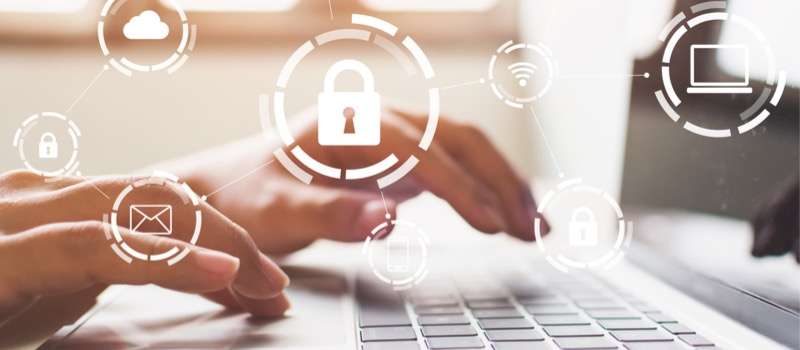The world has faced cybersecurity threats for a long time, but the global pandemic over the past few years has seen an escalation of cybercrimes. As organisations made rapid shifts to remote working and cloud technology to navigate government restrictions and lockdowns, malicious actors took advantage of security vulnerabilities caused by these changes.
While business returns to something resembling normal in 2022, the cybersecurity challenges will remain, and potentially heightened. Organisations wanting to keep their data and business operations secure will do well to consider the following cybersecurity threats in 2022.
Third-party breaches
Cybercriminals can potentially exploit third-party networks and servers, such as those of social media platforms, to gain access to a primary target. This is predicted to become an increasing threat for organisations that employ contractors and freelancers to fulfil work requirements that were previously fulfilled by full-time employees.
To minimise these threats, organisations need to take proactive measures in their cybersecurity strategy to establish potential opportunities with third parties for security breaches. It is important to regularly review and update policies and procedures with third parties, to ensure their security protocols are robust and they are actively protecting your organisation’s sensitive information.
It can be useful to enlist the advice of experienced cybersecurity experts who can undertake a review and make recommendations on the best cybersecurity solutions to avoid third-party data breaches. These can lead to an organisation experiencing legal problems, financial losses or even brand damage with these types of secondary incidents.
Ransomware attacks
The diverse range of industries that were impacted by ransomware attacks in 2021 is predicted to continue into 2022, with high profile companies falling victim and cryptocurrency as ransom payments becoming more popular, making it difficult for threat actors to be tracked.
While only 13% of UK organisations chose to pay a ransom in 2021, the attacks were costly to fix, with an average expense to UK businesses of $1.96 million. With the growing availability of ransomware-as-a-service (RaaS), almost anyone can take advantage of subscription-based access to ransomware to extort money from others and pay a percentage of the ransom to the RasS providers. It is estimated that over 60% of ransomware attacks in recent times have been RaaS and the most common targets have been healthcare and education organisations. RaaS is expected to increase attacks focused on critical infrastructure, including power, transportation, and energy, further creating supply chain problems into 2022, as products and services will be disrupted again.
Typically sensitive data and information is the target of RaaS attacks, so it is vital to ensure your systems are continually monitored, software updated, and data backups are regular. A managed security service provider can ensure your IT infrastructure is armed with technology that focuses on threat detection and response to prevent malicious actors from gaining access to your systems.

Zero trust strategies embraced
With the changing threat landscape, zero trust has become the new standard for cybersecurity. This security strategy is based on the idea of never trusting anyone, but always verifying that everyone is fully identified before they are granted access to the business network or applications. Zero trust safeguards also block users from accessing anything they do not have explicit permission for. This prevents cybercriminals from laterally attacking if they manage to get into business networks.
In 2022, more companies will be encouraged to practice proactive prevention instead of reacting to threats. The hybrid workplace is predicted to become the norm for many businesses as employees have indicated that they prefer working with a mix of remote and in-person methods. Zero trust cybersecurity strategies offer companies a way for them to have secure access across all environments without risk.
Cloud computing
Cloud computing is a technology that allows businesses to store and access data remotely, reducing costs. It provides extra layers of protection over traditional IT infrastructure due to its location outside the network and potential damage from disasters like fire or natural disasters. Despite this, the data remains vulnerable in case of cyber-attacks on cloud infrastructure itself which can be done through malware or vulnerabilities in applications used by users accessing the cloud.
With remote working becoming more of an option for employees and businesses, there are likely to be more shift-to-cloud strategies planned for 2022 than 2021. This trend will lead businesses to boost their cloud technology even more.
To protect against possible attacks, companies should ensure that their cloud services are properly secured. This can be achieved by taking a multi-layered approach that protects all attack surfaces, including networks, mobile devices, and the cloud. The adoption of defence technologies is important to share prevention capabilities such as machine learning through deep data analytics to automate security, with real-time situational awareness for detection and threat assessment on any given endpoint.
Data management
Data is a crucial part of the business world today, acquired with the intent to derive insights for decision making about business decisions. However, most organisations collect more data than they can analyse, which leads to it sitting unused on servers and in databases. IT is estimated that between 55 and 80% of digital data is dark data. This underutilised data is known as “dark data” and is often not governed, leading to potential cybersecurity threats and compliance issues.
To combat this, security experts advise organisations to shift from big data collection and store only what data is needed, implementing data policies that provide strict guidelines on what data should be collected and stored, and for what length of time. A review of your company data will make it possible to develop more accurate models of cyber risk assessment, threats, and anomaly and incident detections.
Poor cyber hygiene
The term “cyber hygiene” refers to regular habits and practices that are implemented while using technology, like avoiding unprotected WiFi networks or implementing safeguards such as multi-factor authentication. Increasingly, remote working has led to systems being accessed from unprotected home networks, and workers are recycling work passwords to use on web applications unrelated to work such as shopping sites and food delivery services. This provides an open door for threat actors to breach business security systems.
It is vital to ensure all employees are kept up-to-date with cybersecurity safety and best practice. Some cybersecurity services provide training and security awareness programs specifically designed for hybrid and remote workplaces.
To ensure your business is ready for the future, partner with leading cybersecurity experts at INTELLIWORX to develop and deploy a comprehensive security solutions framework tailored made for your company.








